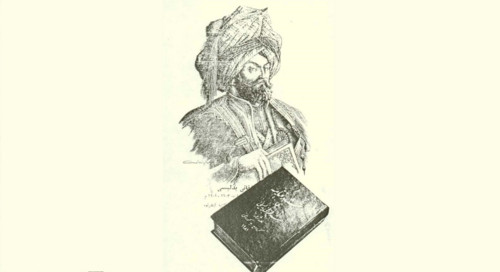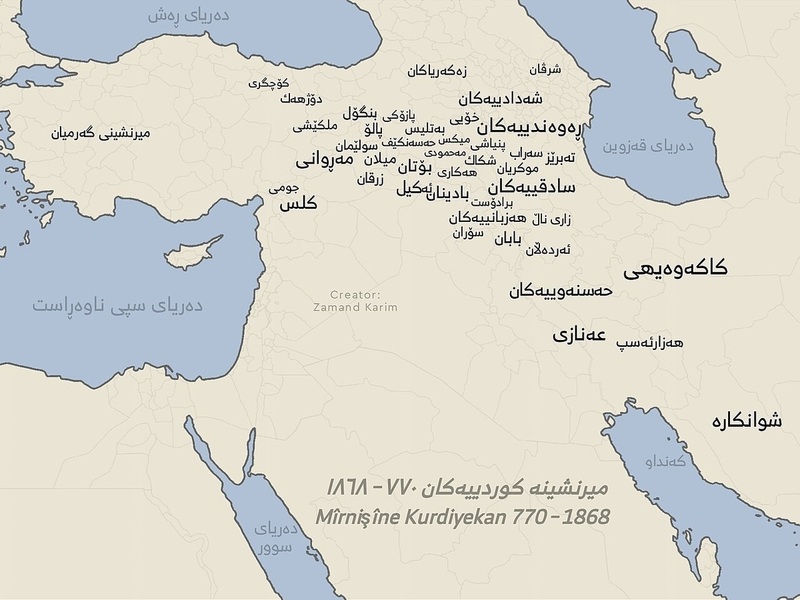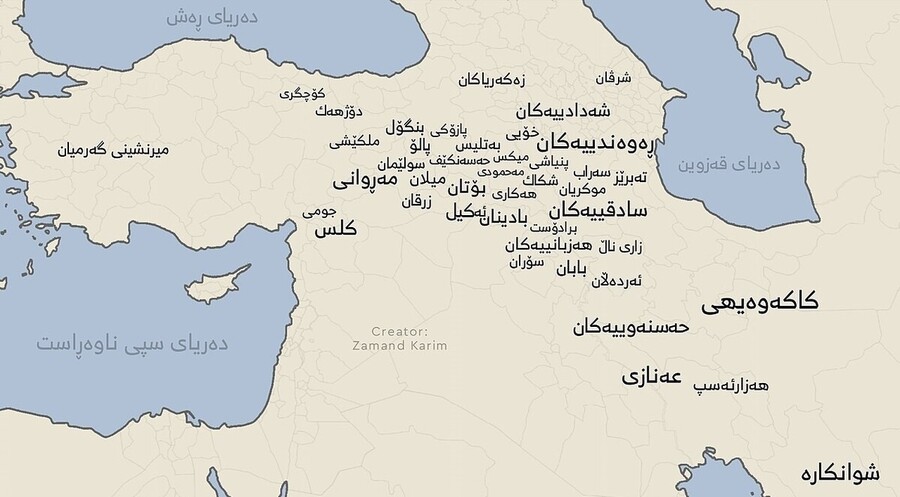The Emirate of Mardasi or Mirdasi is well known in Kurdish history and many historians have heard the names of Akil, Palu, and Chermuk. They are especially mentioned in detail in the Sharafnama by Sharaf Khan Badlisi. In the discussion of the rulers of Diyarbakir, we encounter a section called the History of Akil, Palu, and Chermuk. First, we need to know who the Mardasis were. Mardasi is the name of a tribe of Kurds in Diyarbakir who are inhabitants of the region of Akil. In the early thirteenth century AD, an emirate was established in the region of Akil, known as the Emirate of Mardasi after a tribe living there. Sharaf Khan Badlisi says in his book Sharafnama that the founder of the emirate belonged to the Abbasids. They came later and settled in the Kurdistan region. They influenced the people religiously, economically, and socially and attracted the attention of many people in Diyarbakir. The Mardasis initially began their work on the occasion of religious leadership, sheikhdom, guidance, and religious education. However, after exerting a great influence among the people, they decided to establish an emirate and rule in the region of Akil, unite the tribes of the region became one of their main pillars, and thus they could both through their religious, economic, and social influence attract many tribes and sects from Diyarbakir and establish a great dynasty.
Obviously, the Emirate of Mardasid lasted for a long time and many people ruled in it. The emirs of Akil, Palu, and Charmuk ruled in the three parts. The three branches of the Mardasid had twenty-one emirs and ruled over these areas. That is, the number of their emirs was enormous.

Sharaf Khan Badlisi
The first emir and well-known figure of the Mardasi family was a figure named Pir Mansour, son of Hussein, who initially held the rank of the sheikh. Sharaf Khan mentions his discovery, dignity, protection, and knowledge in Sharafnama. Pir Mansur first established a large temple in the area to guide the people and the people of the area communicated with him. In this way, he gathered many disciples and enthusiasts around him and thus promoted his work. After Pir Mansour, his son Pir Musa succeeded him. Pir Musa established a large monastery in the village of Piran. The village of Piran was the center of the castle and the rule of Akil. After Pir Musa, his son, Pir Badr, took over the religious guidance of the people and the affairs of their monastery and temple. Pir Badr was politically more understanding and cautious than his predecessors, Pir Musa and Pir Mansour.
Therefore, he used religious leadership as a ladder to political positions, or in other words, he was able to use religion, monasteries, temples, and sheikhdom as a ladder to carry out political affairs and secular administration. Therefore, when he saw that all his disciples were ready to carry out his constitutions and social duties in addition to the affairs of the monastery and temple, he gathered many soldiers, cavalry, and armed men around him and captured Akil castle for the first time. He thus officially declared Akil's authority. After a while, one of the Seljuk sultans moved a large and heavy army towards the fortress of Akil to destroy the power of the Kurds of Akil. At that time, Pir Badr was ruling there. In the face of the widespread attack by the Seljuks, Pir Badr was forced to leave there and move to Miafarqin.
Sharaf Khan describes the Seljuk attack: "When Pir Badr fled from the oppression of the Seljuk sultans, he went to Miafarqin and took refuge with Mir Hisamaddin, the ruler there. He hid there for a while until the Seljuk Sultan Alb Arsalan sent Mir Artaq, whom he had appointed governor of Mardin and Amed, to Miafarqin to fight Mir Badr. In short, Amir Artaq was assigned to conquer the fortress of Miafarqin and fulfilled the task. He surrounded the castle and put the inhabitants of the castle in trouble. The arrows of Amir Artaq's army hit the body of Amir Hisamuddin, the head of the fortress, and he died. His supporters were no longer able to stand against him and became weaker and weaker day by day. Until it happened that one night, Amir Artaq attacked the castle, captured it, killed everyone in the castle, and left no one alive. In that battle, Pir Badr was killed, and none of the rulers of Akil survived, except for a child in the womb of Pir Badr's wife. That is why the Mardasi tribe waited day and night for the pregnant woman to give birth, and she did. God gave the Mardasi family a precious jewel from the treasury of the unseen.”

In short, what Sharaf Khan says is that in 1073 AD, when Pir Badr was killed, the Mardasi family had no hope. Their only hope is a child in his pregnant wife's womb. When the child is born, he is named Bulduq. When he grew up, he was trained in government affairs by his mother's skills and with the help of the Mardasi tribe. He succeeded his father and became the ruler of Akil, ruling the region for a long time. After Amir Bolduk, he is succeeded by his son Ibrahim. According to Sharafnama, Ibrahim began to rebuild the country, promote equality, reach out to the subjects, and establish a strong government. The government was very well supported by the people, but death gave no time, and he soon passed away. After Amir Ibrahim, his son Amir Mohammad succeeded him, and like his father, Amir Mohammad Mardasi lived short and died soon. Amir Mohammed had three sons, Amir Isa, Amir Taymurtash, and Amir Hussein. The three brothers divide the inherited region among themselves. That is, one will be the ruler of Akil, one will be the ruler of Palu, and one will be the ruler of Chermok or Chermik. Thus, the Mardasids began to rule in three separate parts and had twenty-one emirs.
As we have already said, the Maradasids are divided into three chiefs, each of whom becomes the ruler of a region.
The first branch would be the rulers of the region of Akil. The rulers of the Akil region were seven: Amir Isa Akil, Amir Dawlat Sha Akil, Amir Isa II, Amir Muhammad Bag Akil, Amir Qasim Bag Akil, Amir Murad Bag Akil, and Amir Jafar Bag Akil.
The second branch of the Mardasid rulers of the Palu region was in Diyarbakir, which had seven emirs. These emirs are Amir Taymurtash Palu, Amir Hamza Palu, Amir Hussein Bag Palu, Amir Jamshid Bag Palu, Amir Hussein Khan Palu, Amir Hassan Bag Palu, Amir Ahmad Bag Palu.
The third branch of the Mardasid rulers were the Chermuk rulers in the northern regions of Diyarbakir, who had eight emirs. These emirs are: Amir Hussein Chermuk, Amir Saifeddin Chermuk, Amir Yousf Chermuk, Amir Walabeik Chermuk, Amir Ali Bayk Chermuk, Amir Esfandiar Chermuk, Amir Bayndor Chermuk, and Amir Mohammad Chermuk.








